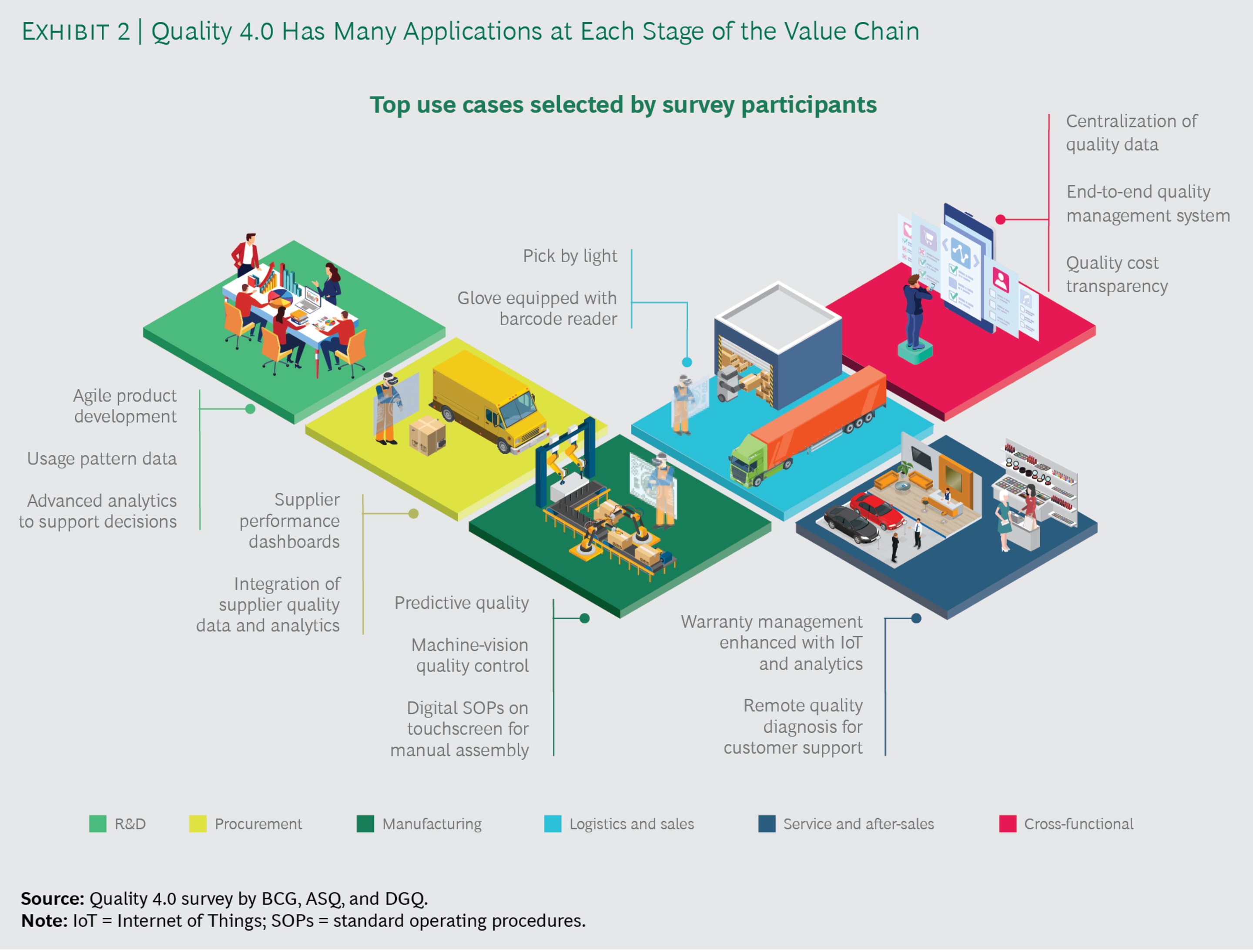More than ever, technology is positioned to support quality improvement. From connected worker tools that improve communication and improve standard work compliance, to more advanced IIoT applications that actively monitor and report on floor conditions in real-time, Industry 4.0 technologies are having an immediate and outsized impact on quality management efforts in many organizations.

But technology alone can’t get the job done. Without the right culture, and leadership to inspire and support that culture, quality issues will persist. The path to Quality 4.0 starts with human operators and relationships, the same as it always has. When given priority, the frontline becomes an invaluable resource in utilizing these new tools to reach a new echelon of quality. Through smarter inspections, a digital quality plan, and the right technologies, companies can realize value-adding benefits. Let’s look at what that entails and how organizations are already charting their own path forward.
The Benefits of Quality 4.0
BCG recently surveyed executives and quality managers from 221 companies in Germany and the US about the role of Quality 4.0 in continuous improvement and what they perceived as the best path to achieving these gains. The survey covered a range of industries, with Manufacturers indicating by a margin of 74% that Quality 4.0 was important in the value chain, specifically citing the importance of real-time documentation, predictive analytics, electronic feedback loops, and physical sensors and tracking to improve quality.

Applications that include machine vision control, digital SOPs on a touch screen for manual assembly and predictive quality are the most cited use cases in manufacturing, along with automatic root cause analysis, machine to machine communication and process simulations to identify potential issues.
More than 60% of surveyed companies say that Quality 4.0 will play an important role in improving operations within five years, but only 16% say they have started implementation and only another 20% have started the planning process. Among the obstacles cited is a lack of a digital transformation roadmap. Only 27% of surveyed companies believe that they have cleared laid out their quality goals, and only 14% feel that the organization as a whole is committed to supporting the process. In short, many of those organizations lack the foundational quality culture needed to make Quality 4.0 a reality.
Creating a Culture that Embraces Quality
One of the reasons machines are so integral to quality improvement is that they are impartial. They don’t hesitate as human operators do when a quality issue arises. They aren’t uncomfortable addressing someone else’s performance. This has long been one of the most significant stumbling blocks for quality improvement. Human operators may not feel obligated to report an issue, or may not be in a mindset to look for issues outside of their immediate responsibilities.
Management plays an important role here in establishing a culture that encourages all employees to bring up all issues whenever they are noticed. Management encourages and rewards new ideas and outside the box thinking that might have been ignored or overlooked in the past. The goal is to create a culture of continuous improvement that will enable technology to do its job in eliminating the issues that have been identified.
Before Quality 4.0 can be effectively implemented, the human element needs to be addressed. Key elements of a successful quality culture include:
- The means by which to communicate concerns to supervisors and for management to communicate changes made to address these concerns.
- Systems by which to measure the impact of the changes made. If a fix is made, what is the result of that fix, and in turn how did that impact productivity, overhead, or other tangible metrics that have a positive impact on the organization?
- Encouraging everyone to ask “what can we do to prevent this problem from occurring?” By shifting to a bottom-up approach in which all employees are empowered to address quality issues and take ownership of their work, the company will be much quicker to act.
How Quality Culture Supports Quality 4.0
For technology to have an impact, the people who will use it need to have a mindset of continuous improvement. They need to be incentivized and encouraged to act when they see a problem and excited to utilize new tools and technologies to do so.
Organizations need to invest in those people to realize these changes. In BCG’s survey, half of the participants said they dedicate less than 2% of their quality management team to Quality 4.0 initiatives. Those who are already benefiting from the technology are dedicating as much as 20% of those resources, and reaping the benefits. Those that succeed are investing in people, developing the skills need to fully leverage new technology.
The most important skills cited by those survey respondents whose companies are successfully implementing Quality 4.0 initiatives were soft skills - communication, change management, teamwork, and leadership in general. These are people who can capture data, evaluate it and communicate its value to the organization as a whole.
BCG outlines five key actions that companies can take as they prepare for Quality 4.0 implementation:
- Identify the pain-points that technology can help resolve.
- Map out priority use cases and run pilots to test the impact of incremental technology improvements.
- Build a roadmap for success based on the results of these tests.
- Establish the IT infrastructure needed to support new technology in the organization.
- Build the skills in your team needed to implement, manage, and analyze the data from new technologies.
- Create and nurture a quality culture in which employees are empowered to communicate concerns, own their work at every step of the process, and every member of the organization is accountable.
 Learn more about the immediate benefits of a digital-first approach to quality, and how you can start building a culture that will support it in your organization in our eBook, How to Accelerate Quality Improvement through Digital Containment
Learn more about the immediate benefits of a digital-first approach to quality, and how you can start building a culture that will support it in your organization in our eBook, How to Accelerate Quality Improvement through Digital Containment



